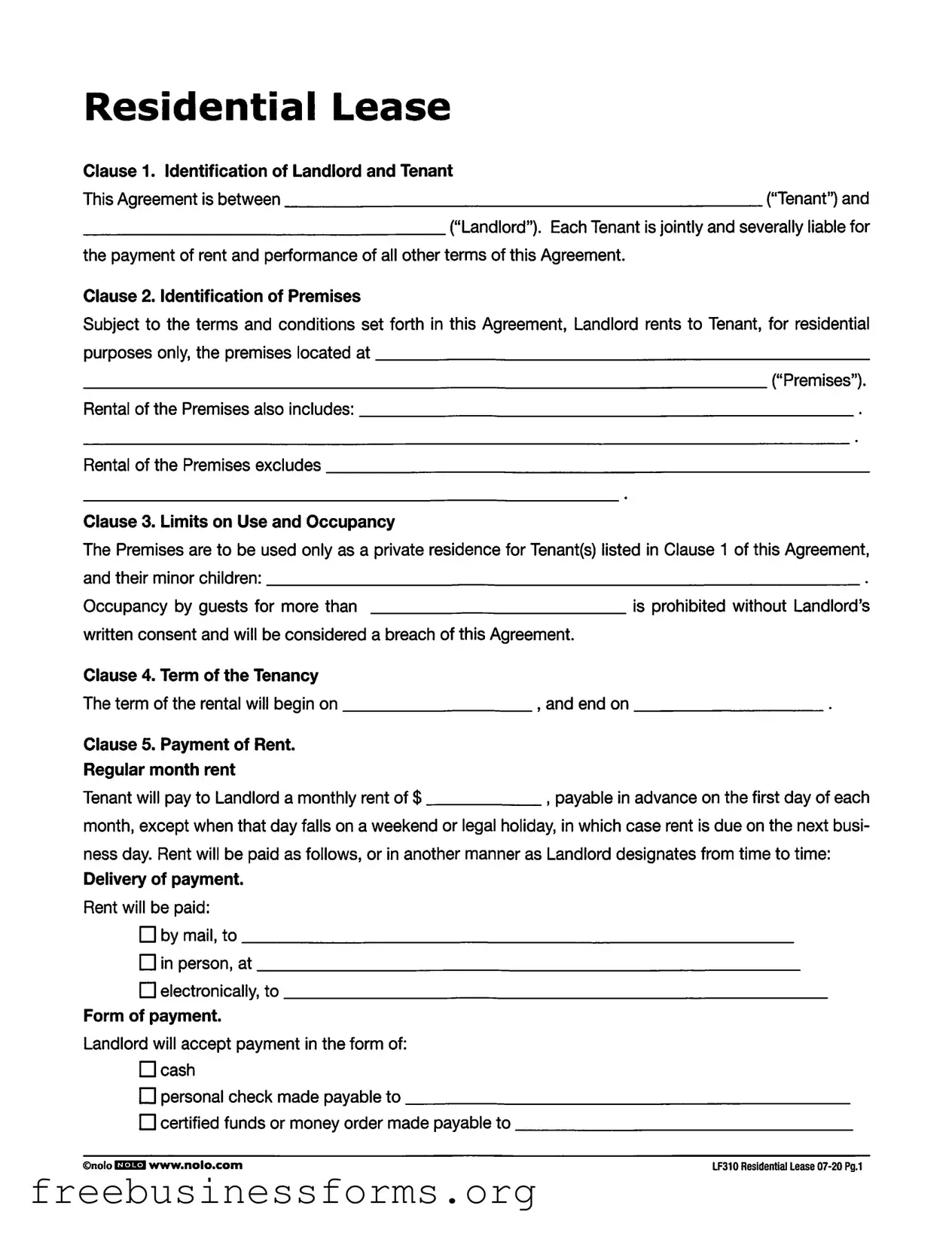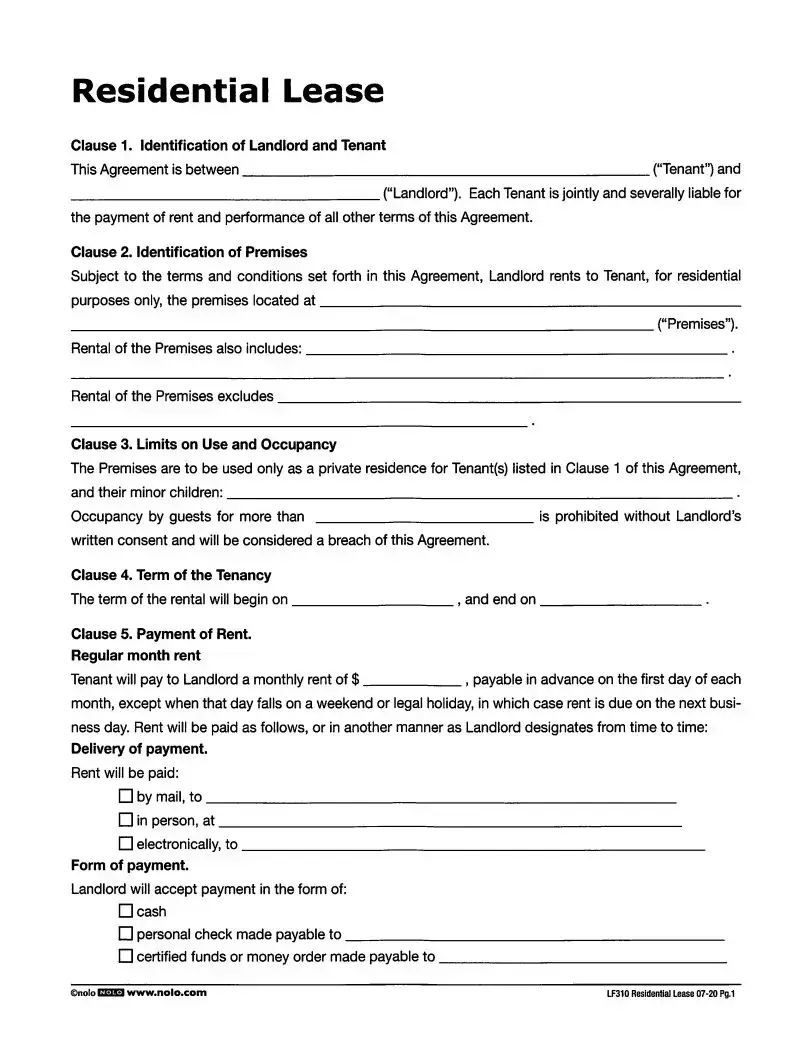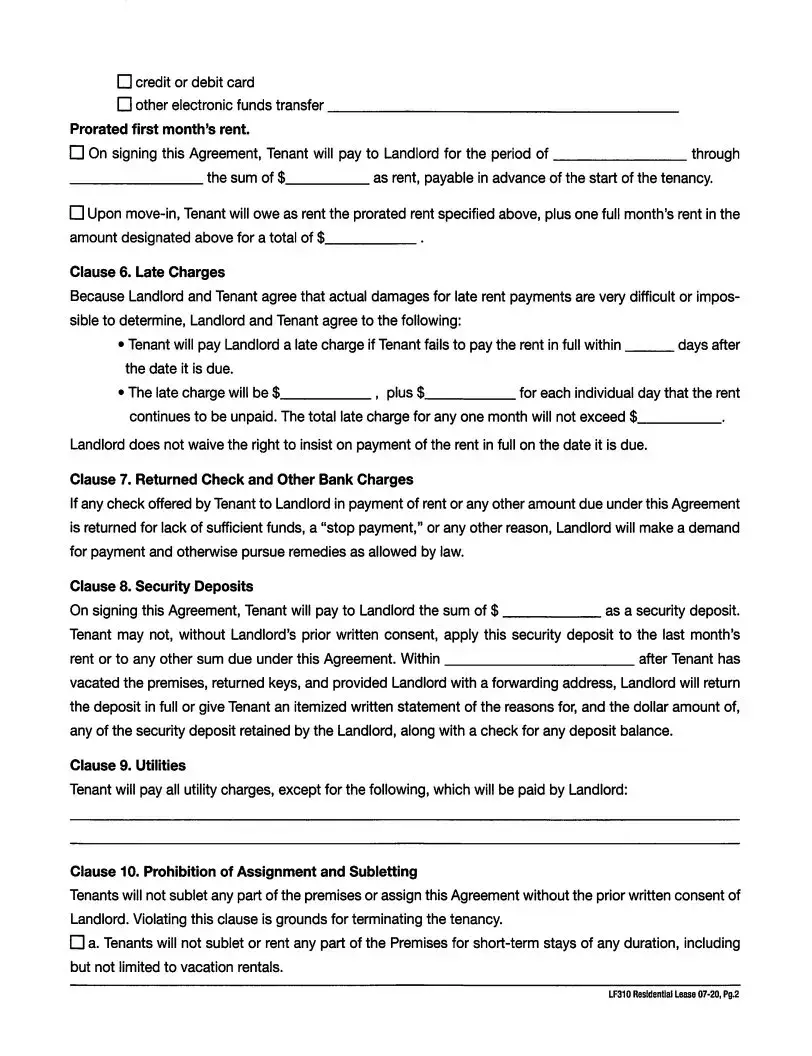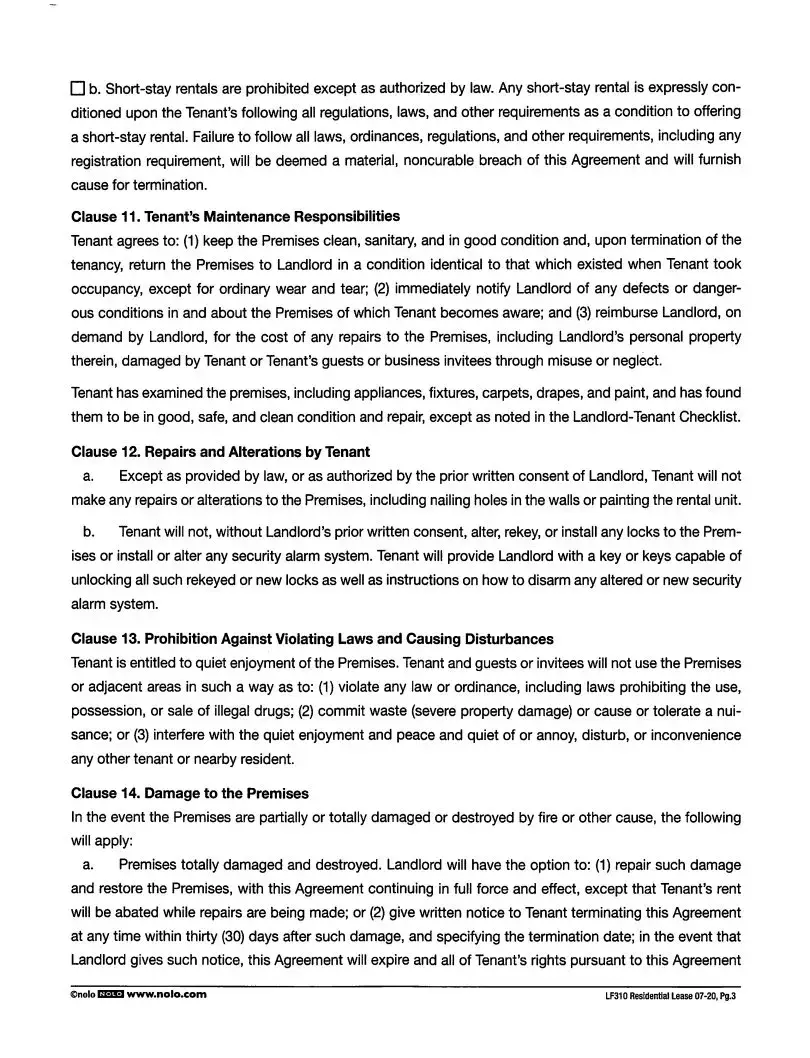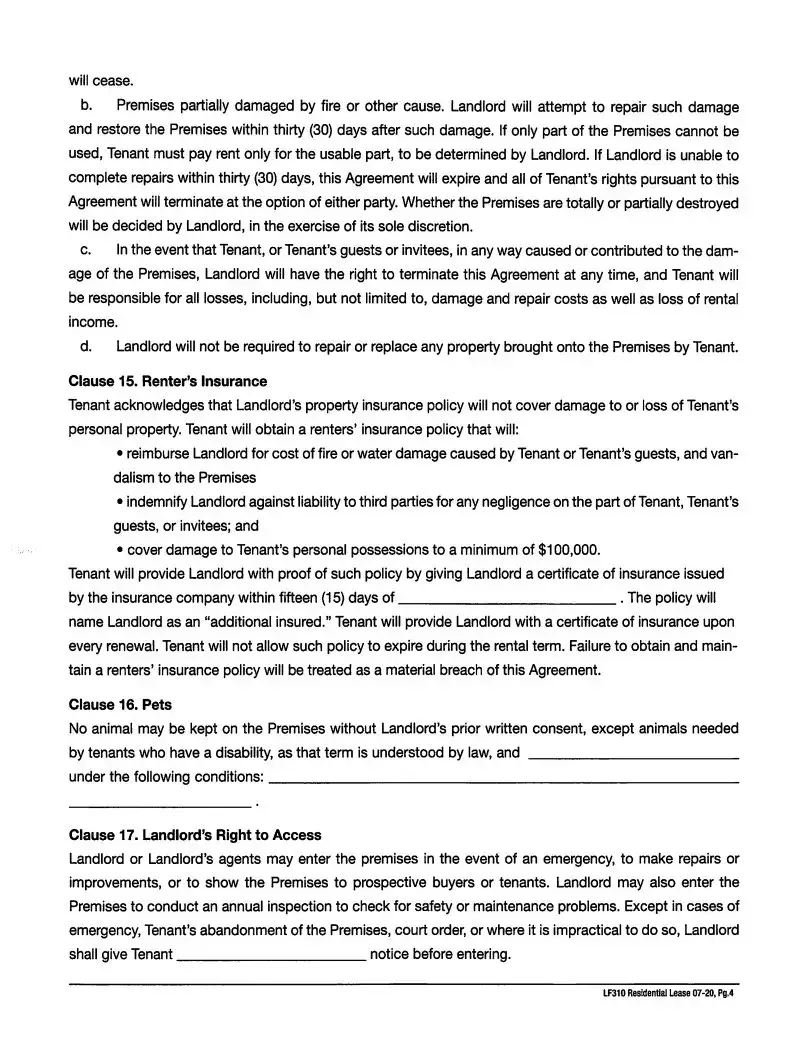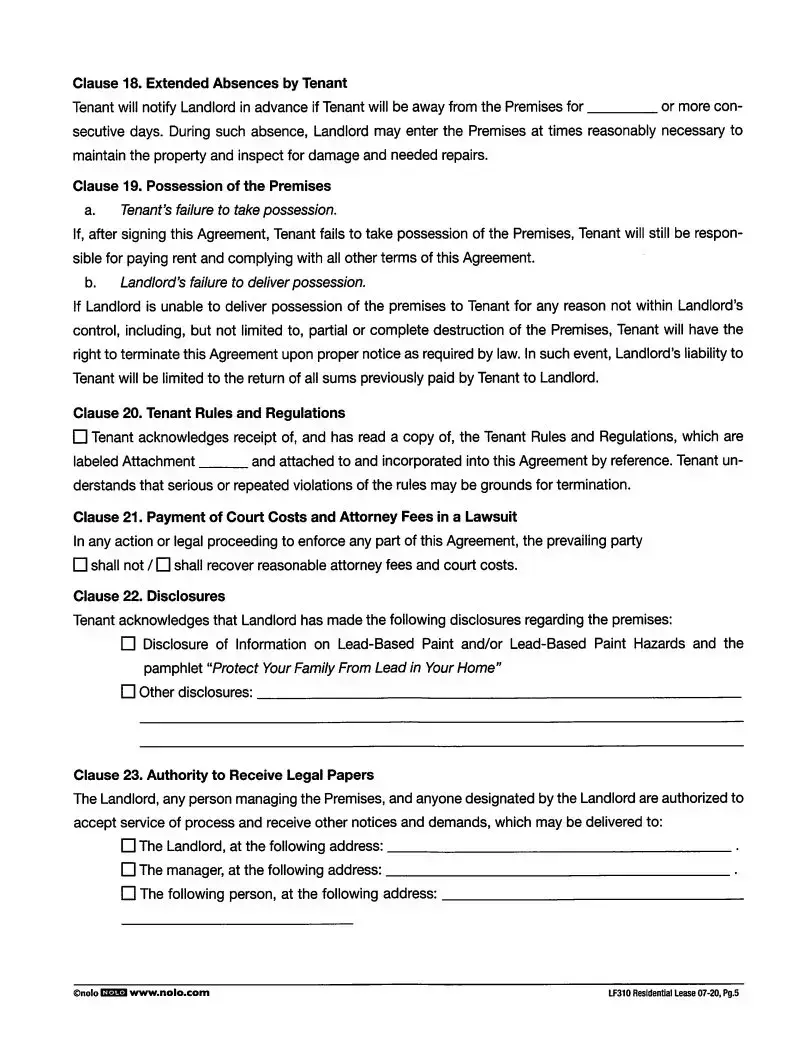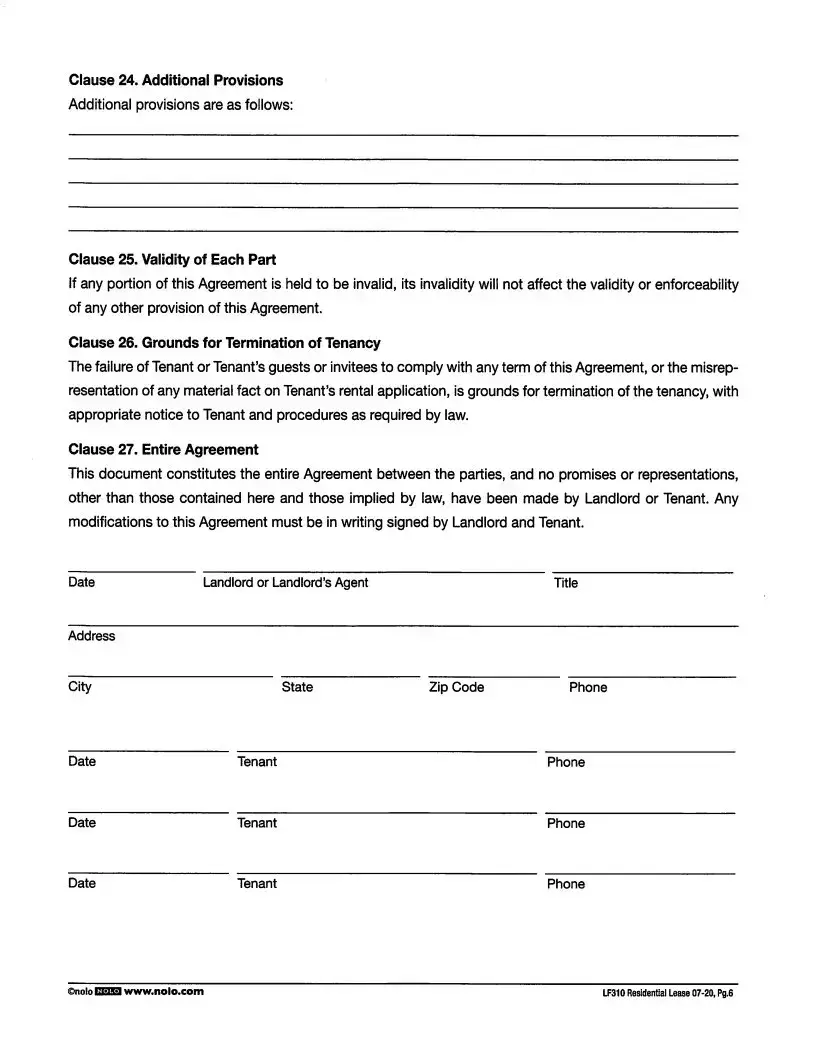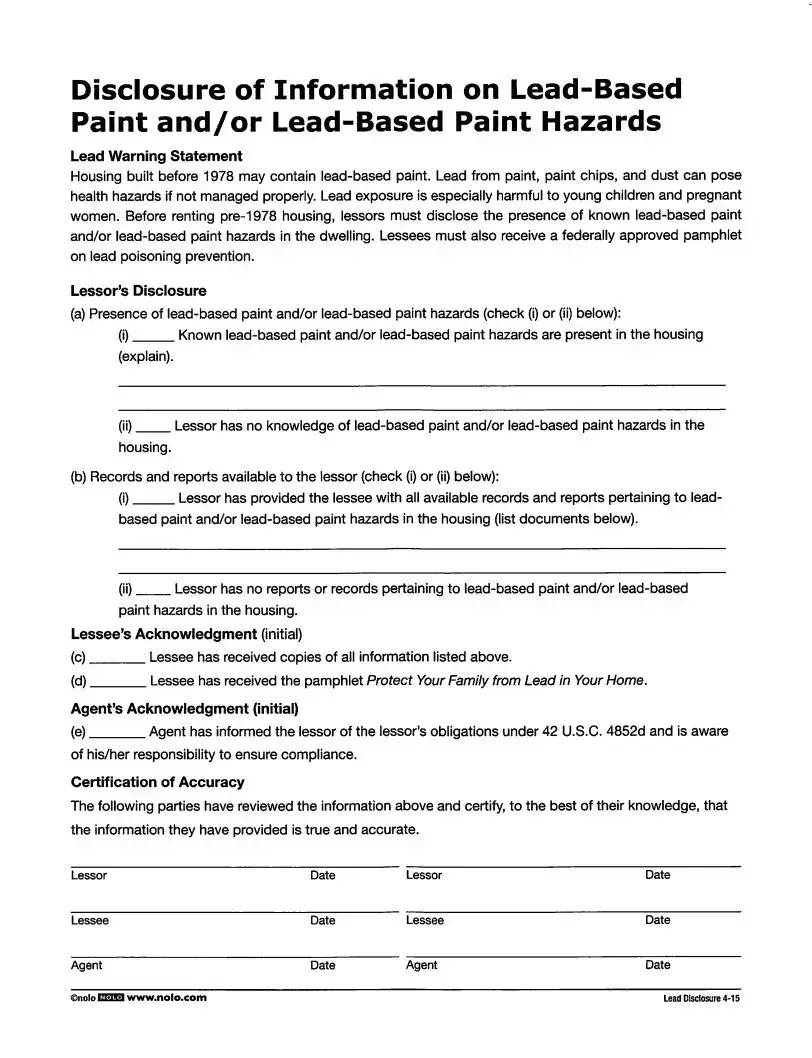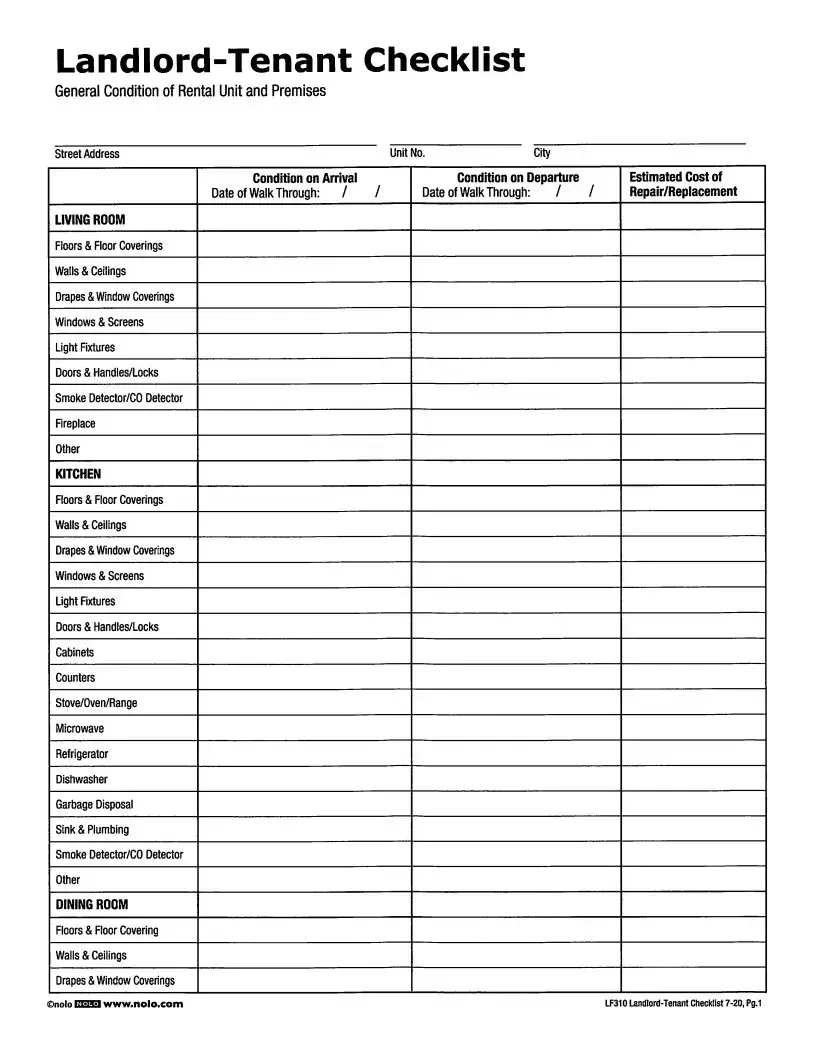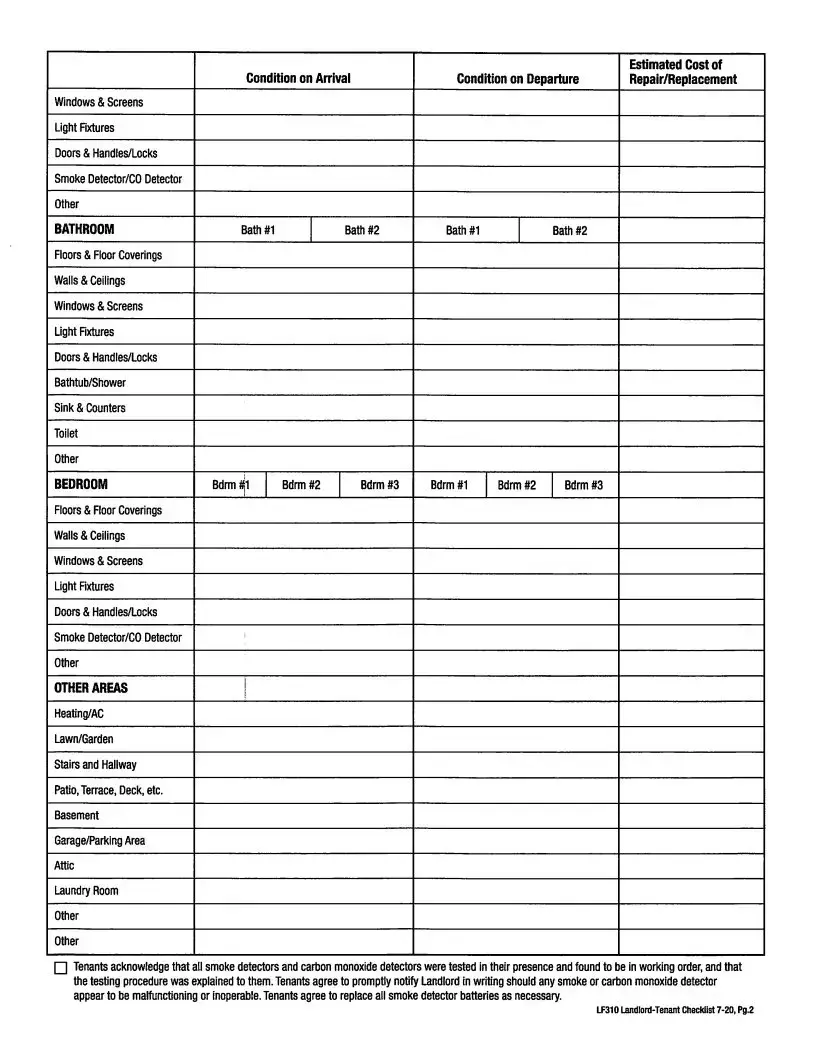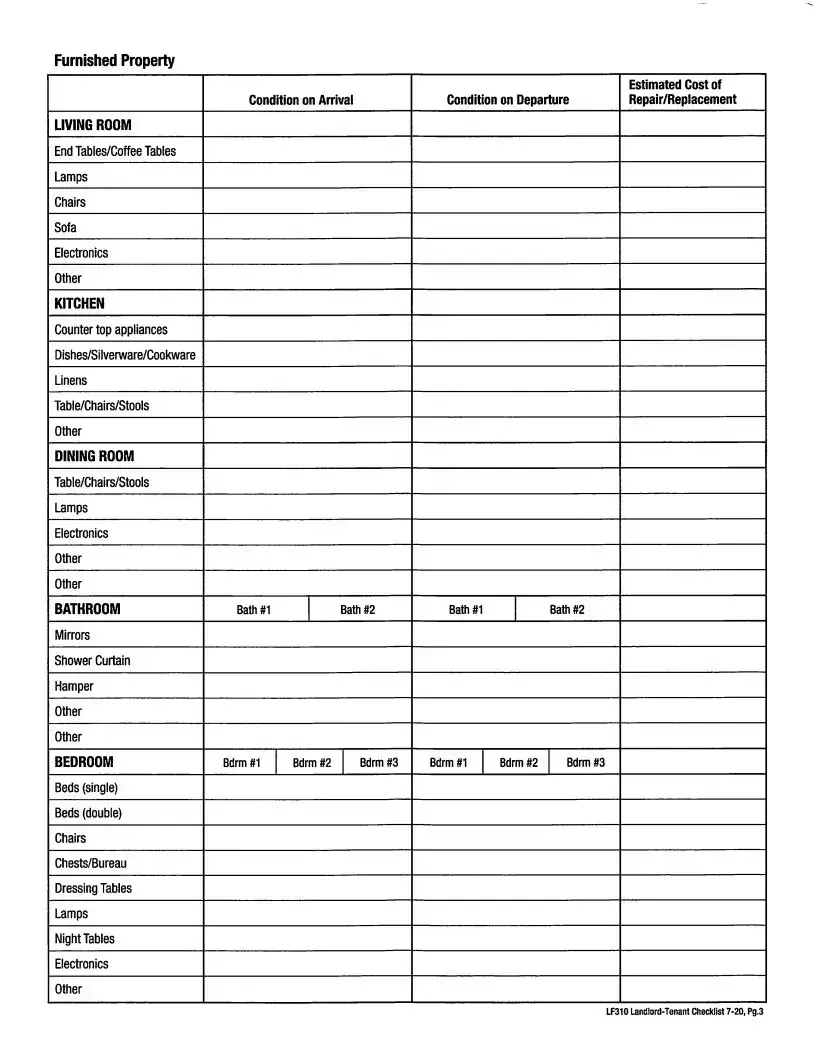The LF310 Residential Lease form serves as a crucial document in establishing the relationship between landlords and tenants, ensuring clarity and protection for both parties. This form begins by identifying the landlord and tenant, emphasizing that all tenants are jointly responsible for rent and compliance with the lease terms. It clearly specifies the premises being rented, limiting its use to residential purposes only, and outlines occupancy restrictions to maintain the integrity of the living space. The lease details the rental term, payment structure, and the necessity for timely rent payments, including provisions for late charges and returned checks. Additionally, it addresses the security deposit, stipulating its amount and conditions for return, while also clarifying utility responsibilities. Importantly, the LF310 form prohibits subletting or assignment of the lease without written consent, safeguarding the landlord's interests. Overall, this lease form is designed to foster a transparent and fair rental experience, setting the groundwork for a successful landlord-tenant relationship.
